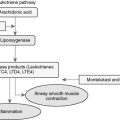CHAPTER 21 Arthritis
| Corticosteroid Agent | Equivalent Oral Dose (mg) |
|---|---|
| Cortisone | 25 |
| Hydrocortisone | 20 |
| Prednisone | 5 |
| Prednisolone | 5 |
| Triamcinolone | 4 |
| Methylprednisolone | 4 |
| Dexamethasone | 0.75 |
| Betamethasone | 0.6 |
DMARD drugs are usually initiated within 3 months of RA diagnosis. DMARDs may reduce or prevent joint damage, preserve joint function, and may help financially to reduce care costs and preserve work status. The DMARDs most commonly used for RA include hydroxychloroquine, sulfasalazine, methotrexate (MTX), leflunomide, etanercept, infliximab, and anakinra (Table 21-2).
Table 21-2 Common Medications Used in DMARD Therapy of RA
| Drug | Typical adult maintenance dosage used in RA |
|---|---|
| Methotrexate | 7.5–20 mg PO once weekly. |
| Hydroxychloroquine | 200 mg PO twice daily |
| Sulfasalazine | 1000 mg PO 2-3 times per day |
| Leflunomide | 20 mg PO once daily if tolerated; otherwise, 10 mg/day |
| Etanercept | 25 mg SC twice per week |
| Infliximab | 3-10 mg/kg IV infusion given every 8 weeks |
| Anakinra | 100 mg SC once daily |
| Adalimumab | 40 mg SC every other week |
PATIENT PROFILE
Allergies: No known drug allergies (NKDA)
Gastroesophageal reflux disease (GERD); now on maintenance therapy
Notes from recent doctor visit:
Social History: Tobacco use: None
Alcohol use: Occasional beer or wine when out to eat
Glucosamine/chondroitin supplement 500 mg PO three times per day
Prevacid 15 mg PO once daily in the morning
Celebrex 100 mg PO twice daily




